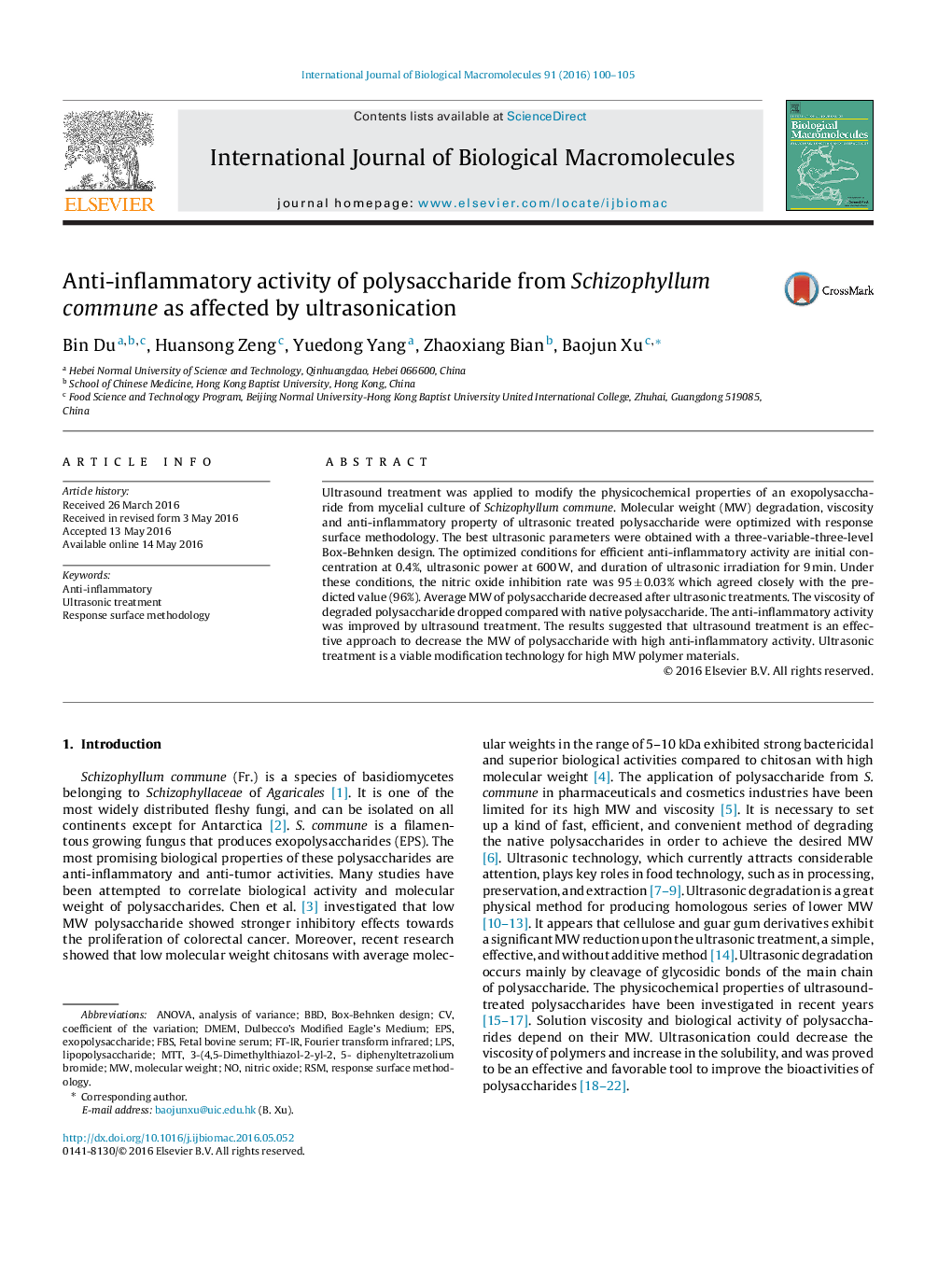| Article ID | Journal | Published Year | Pages | File Type |
|---|---|---|---|---|
| 1985608 | International Journal of Biological Macromolecules | 2016 | 6 Pages |
•The best ultrasonic parameters were obtained with a Box-Behnken design.•No significant change in the polysaccharide structure.•The viscosity of degraded polysaccharide dropped.•Anti-inflammatory activity was improved by the ultrasound treatmen.•Ultrasound is an effective approach to decrease the MW of polysaccharide.
Ultrasound treatment was applied to modify the physicochemical properties of an exopolysaccharide from mycelial culture of Schizophyllum commune. Molecular weight (MW) degradation, viscosity and anti-inflammatory property of ultrasonic treated polysaccharide were optimized with response surface methodology. The best ultrasonic parameters were obtained with a three-variable-three-level Box-Behnken design. The optimized conditions for efficient anti-inflammatory activity are initial concentration at 0.4%, ultrasonic power at 600 W, and duration of ultrasonic irradiation for 9 min. Under these conditions, the nitric oxide inhibition rate was 95 ± 0.03% which agreed closely with the predicted value (96%). Average MW of polysaccharide decreased after ultrasonic treatments. The viscosity of degraded polysaccharide dropped compared with native polysaccharide. The anti-inflammatory activity was improved by ultrasound treatment. The results suggested that ultrasound treatment is an effective approach to decrease the MW of polysaccharide with high anti-inflammatory activity. Ultrasonic treatment is a viable modification technology for high MW polymer materials.
